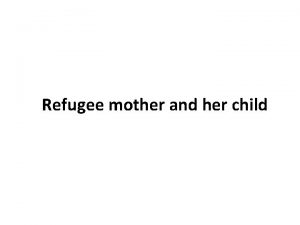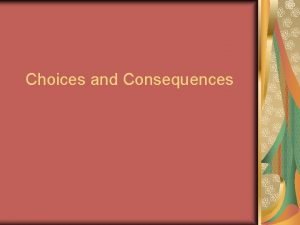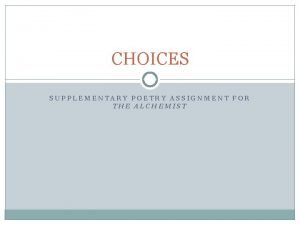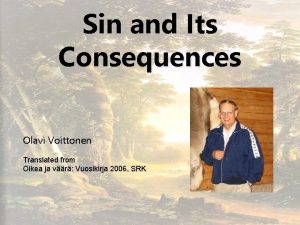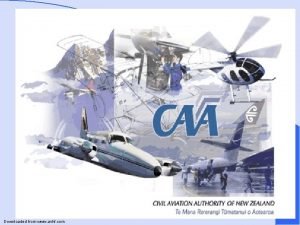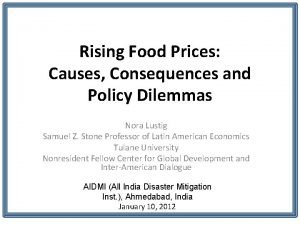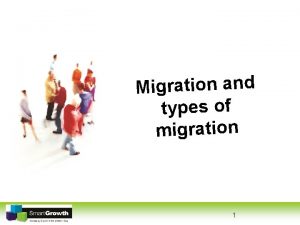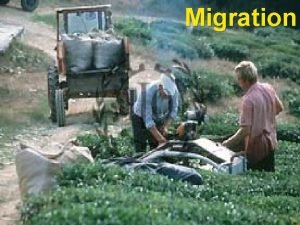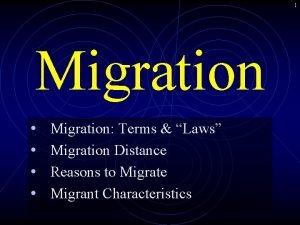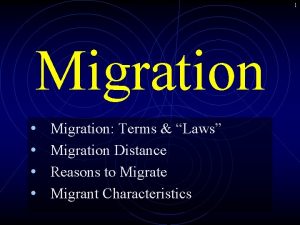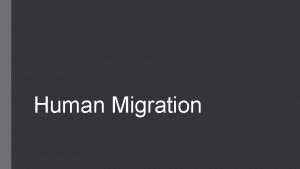MIGRATION REFUGEE AND CONFLICT CONSEQUENCES Refugee Flow as




















- Slides: 20

MIGRATION, REFUGEE AND CONFLICT- CONSEQUENCES Refugee Flow as Source of Conflicts and its Consequences

Content § § § History- International Refugee Regime Causes and Consequences of Refugee movement- Factors Leading to Flight and its consequences Refugees in South Asia-Causes and Consequences of Displacement and protection framework

The Origins of Refugee Regime World War II- 1940 s 40 million refugees in Europe

United Nations Established to foster international cooperation and prevent future conflicts

The United Nations High Commissioner for Refugees Established to 1. Protect Refugees 2. To support countries in the search for durable solutions for refugees

The United Nations High Commissioner for Refugees Durable Solutions Voluntary repatriation: refugees are able to return to their home country because their lives and liberty are no longer threatened; Local integration: host governments allow refugees to integrate into the country of first asylum; and Resettlement in a third country: repatriation is unsafe and the first-asylum country refuses local integration.

UN Convention Relating to the Status of Refugees 1. 2. 3. 4. Outside of the country of origin Well founded fear Persecution Race, Religion, Nationality, Social Group, Political opinion

UN Convention Relating to the Status of Refugees Race : includes ethnic groups and social groups of common descent. Religion: includes identification with a group that tends to share common traditions or beliefs, as well as the active practice of religion. Nationality includes an individual’s citizenship. Social group refers to people who share a similar background, habits or social status. It has applied to families of capitalists, landowners, homosexuals, entrepreneurs and former members of the military. Political opinion refers to ideas not tolerated by the authorities,

Protocol on the Status of Refugees The 1967 Protocol lifted the time limit and extended coverage to refugees throughout the world

Refugees vs. Asylees are people who move across borders in search of protection, but who may not fulfill the strict criteria laid down by the 1951 Convention. . Refugee is the term used to describe a person who has already been granted protection. . The definition of asylum seeker may vary from country to country, depending on the laws of each country.

Limitation to the definition and Framework The definition did not include those fleeing the generalized danger of war insurrection, or displaced by natural disaster or government plans (whether for development or population

Regional Conventions Central American governments adopted the Cartagena Declaration in 1984 and enlarged the concept of refugee to include: “Persons who flee their countries because their lives, safety orfreedom have been threatened by generalized violence, foreign aggression, internal conflicts, massive violation of human rights or other circumstances which have seriously disturbed public order. ”

Who are Refugees? Scholars in anthropological and sociological works considered a wider range of refugee categories generated by economic, social and political factors which are interdependent. not responding anymore to the legal framework, because of a more diverse refugee population and the ever growing blurring line between economic and political refugees. . . (Art Hansen and Anthony Oliver-Smith, 1982)

What creates refugees and refugee movement? The situations which most commonly give rise to large refugee movements and requests for asylum include i. iii. iv. v. vi. viii. ix. External and civil wars, Political unrest and revolution, Terrorism The expulsion of ethnic minorities, Ethno-religious and communal conflict, Displacement of populations through technological developments such as mechanization of agriculture and hydroelectric schemes, Land reforms and resettlement programmes, Famines and other 'natural' disasters, Wide variety of human rights violations and oppressive state regimes

Refugees as a consequence of armed conflict Since the end of the Cold War, increasing numbers of people have been forced to leave their homes as a result of armed conflict, internal strife, and systematic violations of human rights. Domestic strife and civil war frequently produce large population dislocations and refugee flows across national boundaries. The number of people forcibly uprooted by conflict and persecution worldwide stood at 42 million at the end of 2009 and more prolonged conflicts resulting in protracted displacement (UNHCR, Global Trends, 2009).

Origin of Major Refugee Populations in 1999 Country of Origin Main country of asylum Refugees Afghanistan Pakistan/ Iran 3, 580, 400 Burundi Tanzania 568, 000 Iraq Iran 512, 800 Sudan Uganda/D. R/Congo/ Ethopia/Kenya 490, 400 Bosnia-Herzegovina Croatia/USA/Sweden/ Netherlands/ Denmark 478, 300 Somalia Kenya/Ethopia/Yemen/Djibouti 447, 800 Angola Zambia/D. R. Congo/ Namibia 432, 700 Sierra Leone Guinea/Liberia 400, 800 Eritrea Sudan 376, 400 Vietnam China/USA 370, 300

Refugee Hosting Although developed countries contribute most of the funding to assist refugees, developing countries host the vast majority of the world’s refugees. The poorest countries have provided asylum and shelter for almost three quarter of the world’s refugees over the past decade. Less developed countries are both the major source and destination of refugees. “From 1992 -2001, 86% of the world’s refugees originated from developing countries, while at the same time these countries were providing asylum to 72% of the global refugee population” (UNHCR, 2002)

Refugee Hosting Host Country Number of Refugees West Bank and Gaza 1, 8, 28, 100 Pakistan 291, 110 Kenya 377, 400 Sudan 233, 900 Rwanda 59, 000 Liberia 18, 800 World Refugee Survey, 2009, UNHCR In 2009, nations with per capita GDPs of less than $2, 000 hosted almost half of world refugees.

Consequences of Refugee flows Refugees often perceived as a threat to national and regional security and stability. Spill-over effects- refugee warriors allying themselves with political factions—whether in government or opposition—in their host state and becoming entangled in that state’s internal politics. Neighboring states with latent conflicts are more sensitive to the inflow of refugee flows and, consequently, more likely to escalate into militarized conflict (Salehyan and Gleditsch, 2006) Potential conflicts over resources created by the presence of large groups of refugees- it could be perceived competition for resources or of resentment when refugees

Questions Causes for refugee flows? Bi-lateral and Regional cooperation for the protection of Refugees? - Protection gap if any Protection measures, plans and responses of UN agencies and other actors?
 Internal and external conflict worksheets
Internal and external conflict worksheets What is conflict and conflict resolution?
What is conflict and conflict resolution? External and internal conflict definition
External and internal conflict definition Summary of the poem refugee mother and child
Summary of the poem refugee mother and child Chapter 16-19 things fall apart
Chapter 16-19 things fall apart Objective consequences
Objective consequences Choices poem by allen steble
Choices poem by allen steble What is sin and its consequences
What is sin and its consequences 5 hazardous attitudes
5 hazardous attitudes Choices have consequences philosophy
Choices have consequences philosophy Actions and their consequences examples
Actions and their consequences examples Dramatic irony romeo and juliet act 4
Dramatic irony romeo and juliet act 4 Rising food prices causes and consequences
Rising food prices causes and consequences It is the appearance and feel of an event.
It is the appearance and feel of an event. Shaping behavior through rewards and consequences
Shaping behavior through rewards and consequences Transform flow and transaction flow
Transform flow and transaction flow Data flow structure
Data flow structure Definition
Definition Internal flow examples
Internal flow examples Control flow and data flow computers
Control flow and data flow computers Annubar vs pitot tube
Annubar vs pitot tube



